Spectacular Start to 10th Anniversary Šibenik Dance Festival
July 20, 2021 – The streets of Šibenik are overflowing with life this July. On town squares, streets and in parks, different events appeal to every generation and demographic. On Monday 19th, the opening of the Supertoon animation festival sees families gather to watch feature-length cartoons in the Old Town streets. Above their heads, in St. Michael's Fortress, a much more startling evening's entertainment is taking place. It's the opening of the 10th anniversary Šibenik Dance Festival.
'Burning Water' by renowned Greek choreographer Andonis Foniadakis is not always easy to watch. Commissioned specifically for the ballet company of Croatian National Theatre Ivan pl. Zajc in Rijeka, the dancers have had a year to perfect it since its Capital of Culture premiere.
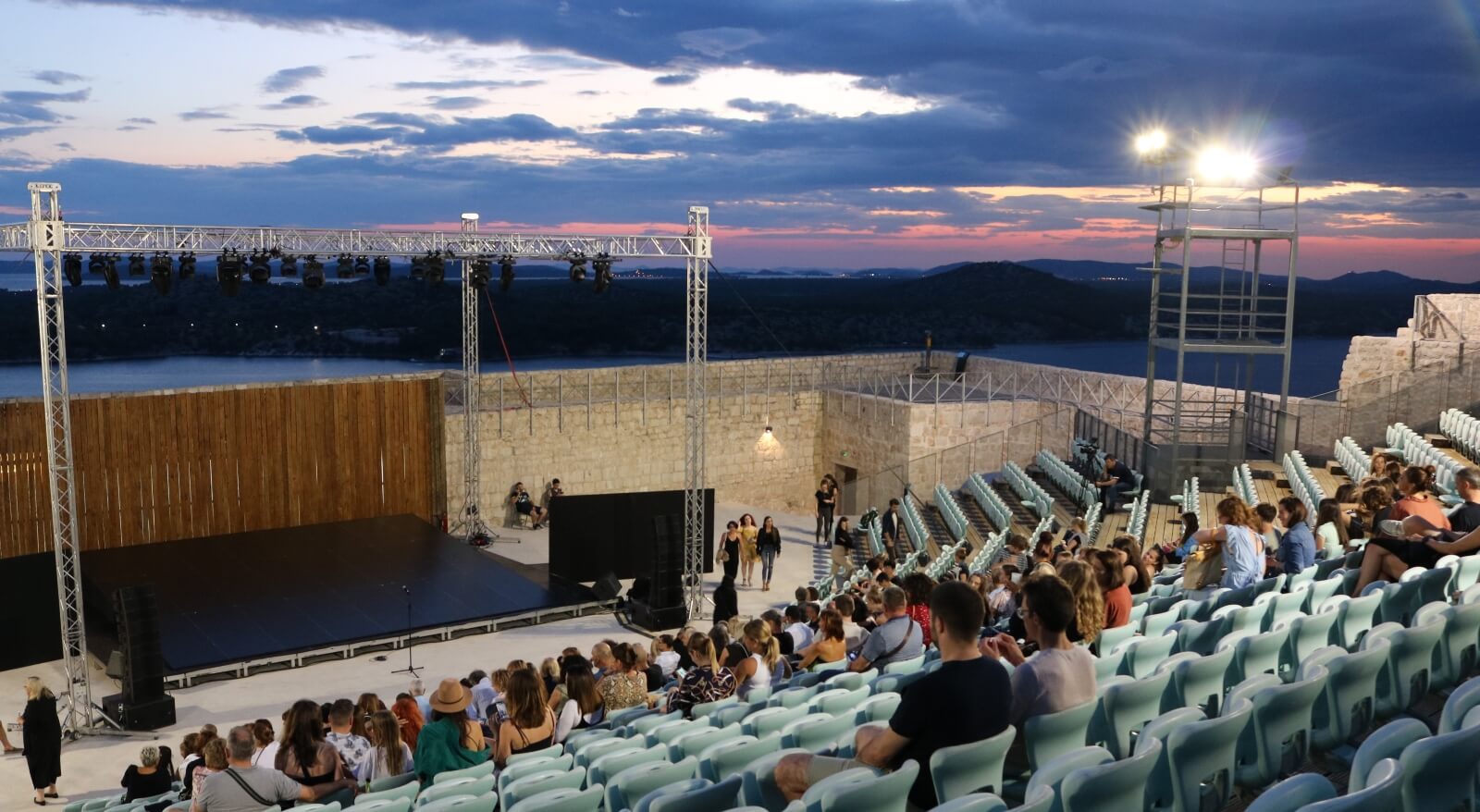 A spectacular backdrop of Šibenik, the Adriatic and sunset greet attendees at the opening of the 10th annual Šibenik Dance Festival © Marc Rowlands.
A spectacular backdrop of Šibenik, the Adriatic and sunset greet attendees at the opening of the 10th annual Šibenik Dance Festival © Marc Rowlands.
The audience takes their seats at sunset. But, as the performance begins, everything is enveloped in black. Minimally lit, androgynous dancers arrive on stage in a most unorthodox manner, their bodies twisted and contorted beyond regular, recognisable movement.
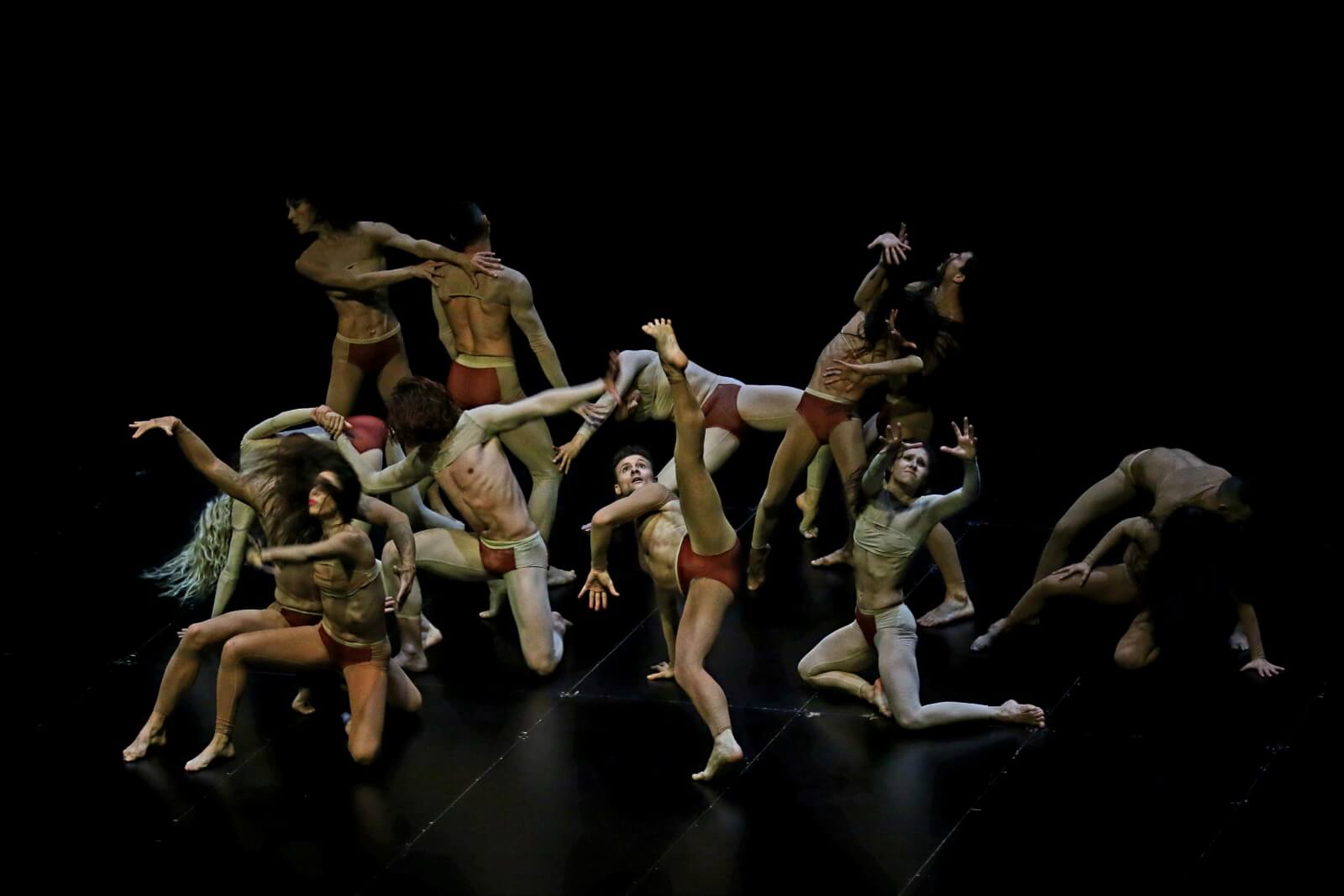
“That is the signature style of Andonis Foniadakis,” says Šibenik Dance Festival director Zorana Mihelčić. “Everybody knows it because he's so well established; very nervous, interrupted movements. I personally love his work and right now he's one of the most frequently requested choreographers in the world.”

Having helmed Šibenik Dance Festival from its start to this, its 10th anniversary, Mihelčić is more than satisfied with its progress. And, so she should be. In the seats on opening night, German, English, Slovenian, Croatian, and at least one Scandinavian language are heard. On the stage, an international touring ballet troupe and world-renowned choreographer. This is a far cry from the festival's beginnings.
Evolution of Šibenik Dance Festival
“We started Šibenik Dance Festival 10 years ago as a small review of dance studios and awarded dancers. But not, professionals,” says Mihelčić. “At that time, it was held in the square just in front of Šibenik cathedral. It grew steadily each year until 2014 when the first of our fortresses was renovated. Within a month of St. Michael's opening, we secured permission to hold our opening night there. That really put us on the map and we've been there ever since.”
“We now have two programmes running simultaneously; we kept the amateur and student dancers programme, which was our foundation. But, now we have professional, international dance companies as a major part of each event.”
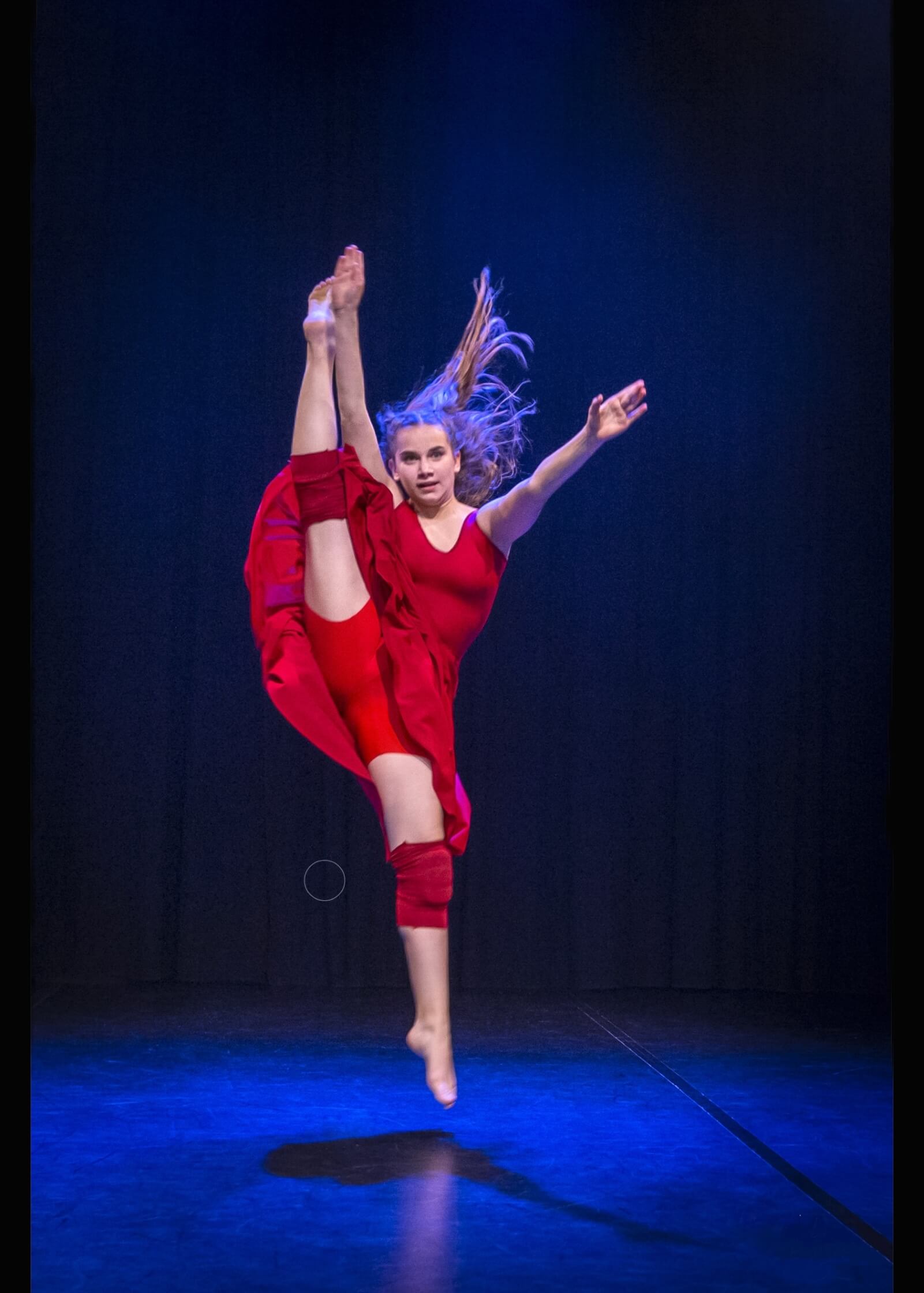 Ilijana's dancers, part of the student / fringe programme of Šibenik Dance Festival © Mladen Božičković
Ilijana's dancers, part of the student / fringe programme of Šibenik Dance Festival © Mladen Božičković
Continuing throughout this week, Šibenik Dance Festival manages to entertain everyone currently in Šibenik. Committed fans of contemporary dance and art will visit more spectacular venues like Barone Fortress. On Wednesday 21st, a visit there by Zoltán Fodor's Inversedance – an incredibly well-respected dance company from Budapest. They arrive with a new performance 'You and the World'. Its premiere was just one month ago. The next night, Thursday 22 July, jazz and hip hop dancing, again at Fortress Barone and the Association of Ballet Artists of Serbia.
In Arsen Art House, conceptual and contemporary pieces by Rita Gobi from Hungary and regional star Isidora Stanišić on Tuesday 20th. The festival concludes in the same venue on Friday 23 with a conceptual piece called 'Body Shots'. It's a co-production between Germany's CocoonDance Company and Zagreb Dance Center.
 Body Shots by CocoonDance / Zagreb Dance Center © Neven Petrović.
Body Shots by CocoonDance / Zagreb Dance Center © Neven Petrović.
Although, for many visitors, the highlight of Šibenik Dance Festival is still the public performance on the city streets by youngsters and amateur dancers.
“This year, it's a really exciting mixture, accessible to everyone,” says Zorana Mihelčić, clearly excited about the performances to come. “20 minutes of great tap dancers from Dubrovnik, then 10 to 15 minutes of very young students from the ballet school in Split. After that, contemporary dancers from Požega, also salsa, hip hop fusion, classical and contemporary ballet. It will be great.”
 As shown above, final applause for the 2021 festival opening night. Festival director Zorana Mihelčić can be seen in the bottom right-hand corner.
As shown above, final applause for the 2021 festival opening night. Festival director Zorana Mihelčić can be seen in the bottom right-hand corner.
The free public performance of youngsters and amateurs at the 10th anniversary of Šibenik Dance Festival takes place at Poljana square, just in front of Šibenik National Theatre on Wednesday 21 and Thursday 22 July between the hours of 19.00 and 22.00.
All photos © Šibenik Dance Festival unless otherwise accredited.
PHOTOS: Outstanding Contemporary Croatian Architecture of the Year
February 10, 2021 – 10 of the most outstanding examples of contemporary Croatian architecture have been selected by the Association of Croatian Architects to compete in the extremely prestigious Mies van der Rohe Awards. Held only once every two years, they are the European equivalent of the Pritzker Prize for Architecture.
The Mies van der Rohe Awards are a really big deal. The greatest works of European architecture compete for recognition in the competition. The greatest success of Croatian architecture in the awards was attained by UP studios' Toma Plejić and Lea Pelivan, who received a special award for upcoming architects and had their high school in Koprivnica named the best building in that category in 2009. The success has had a considerable impact on their careers since.
Being held only once every two years, Croatian architecture projects completed since the closure of entries for the 2019 awards are eligible to be submitted. Here are the outstanding examples of contemporary Croatian architecture that will represent the country in 2022.
Cinema Urania Zagreb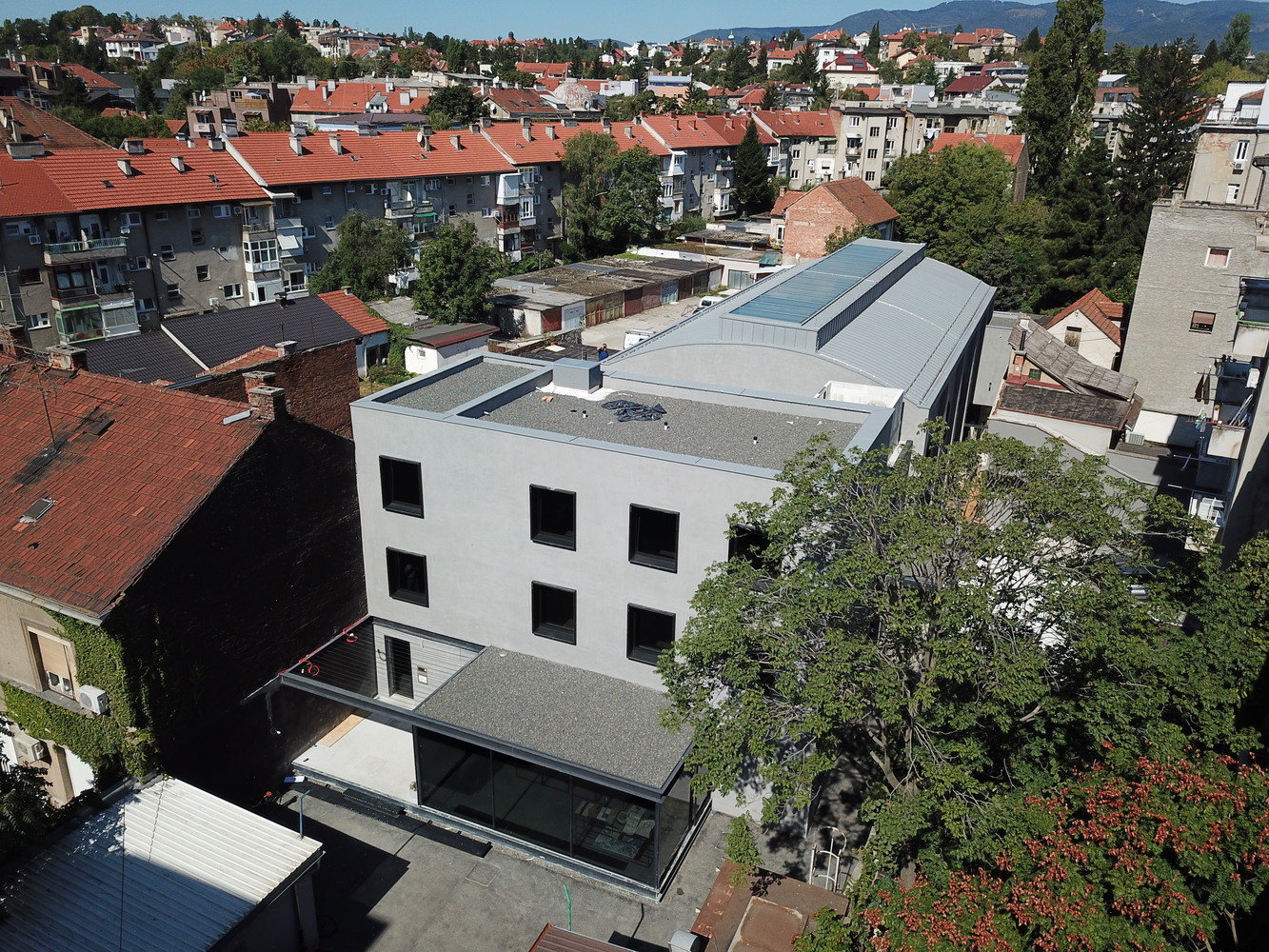
An old neighbourhood cinema built into the back streets near Kvatric. In their redesign, 3LHD preserved the best features from this early example of concrete engineering in Croatian architecture. They added a glass pavilion at the entrance, atriums and skylights, flooding the former darkness with the natural light needed for its new purpose as an event and work space.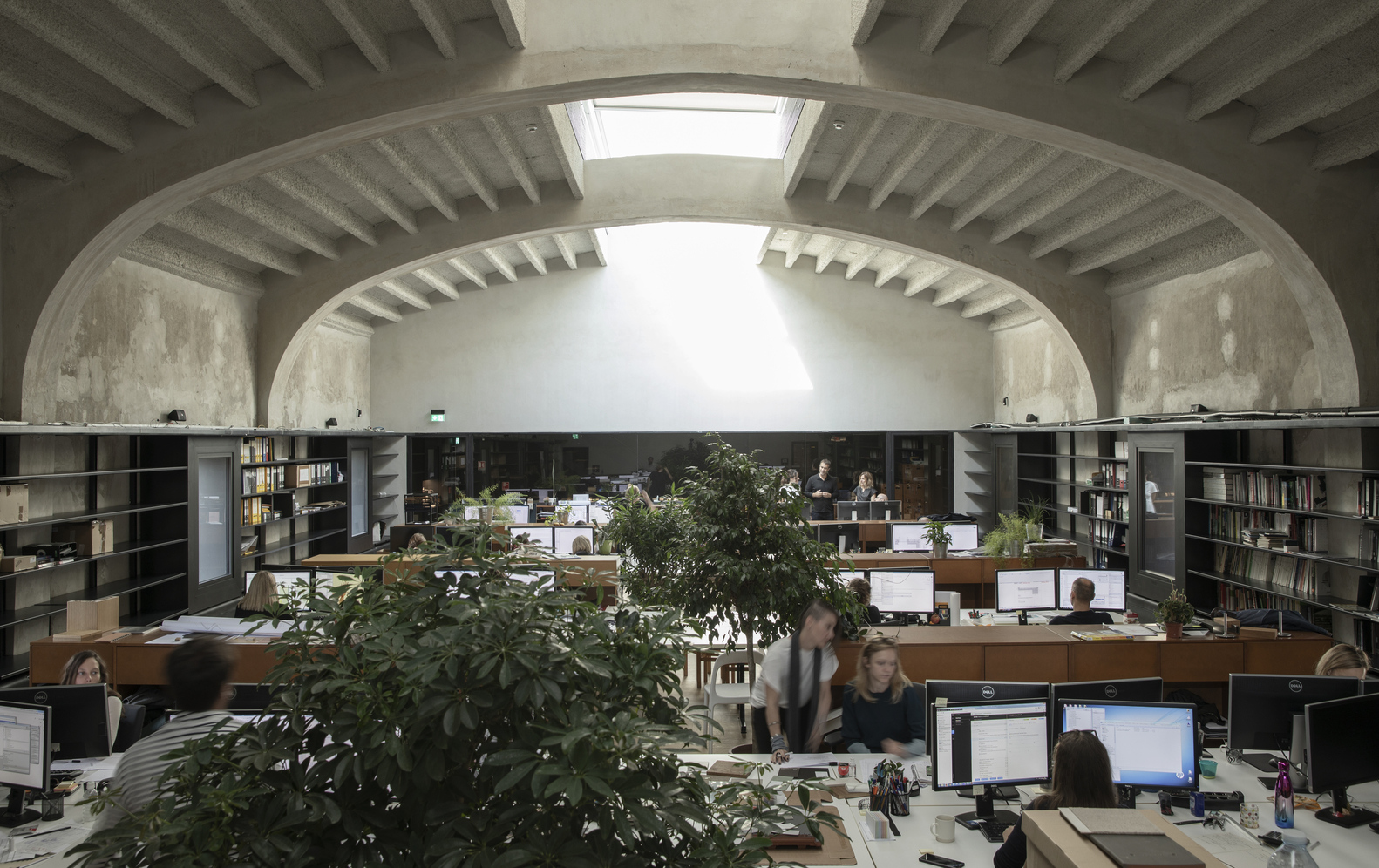 © Jure Živković
© Jure Živković
Grand Park Hotel, Rovinj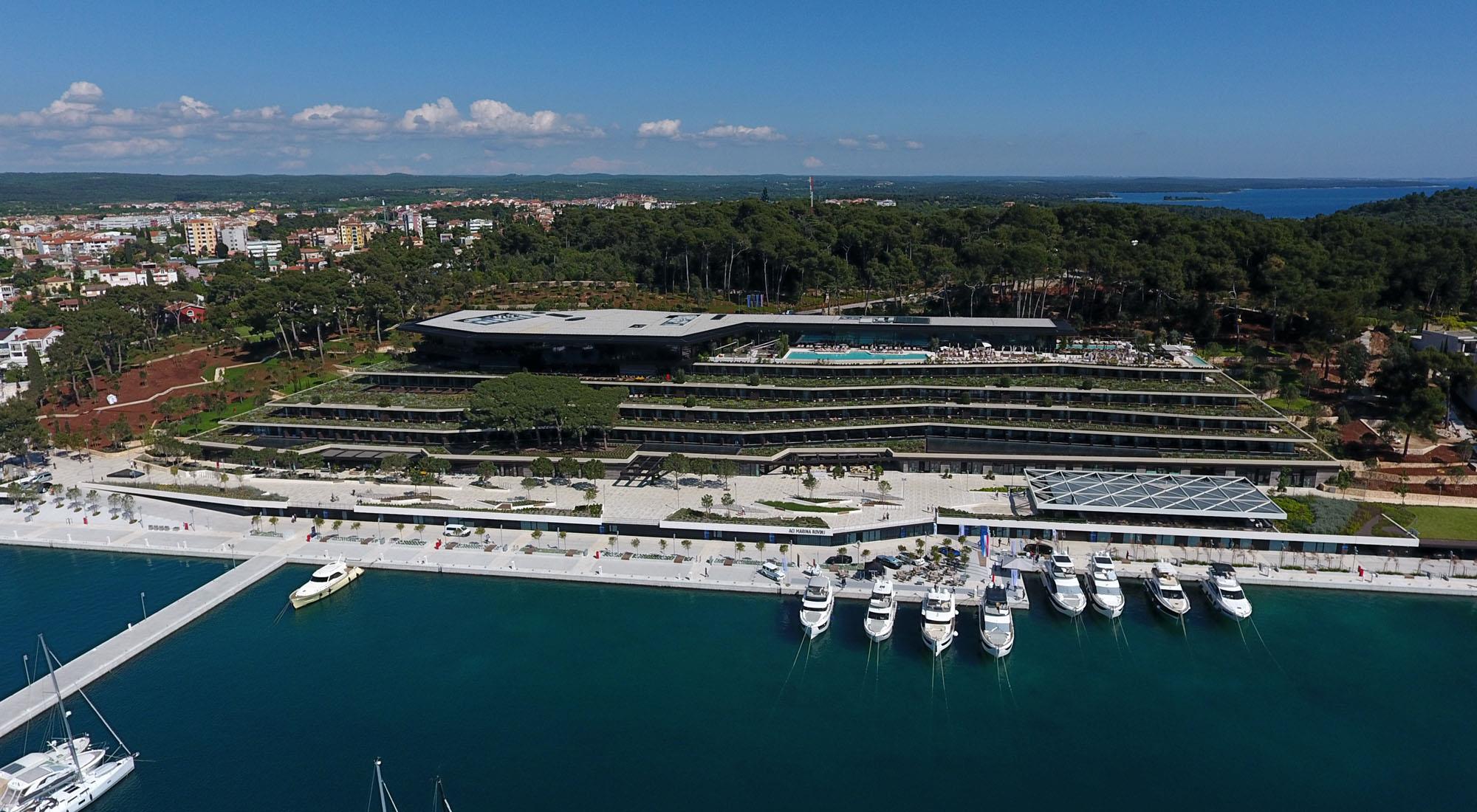
Sprawling widely across six stepped levels, the new luxury Grand Park Hotel and spa could easily have looked a long swipe of concrete. But, by places greenery on each of its staged roofs, architects 3LHD have ensured that no matter where you are in the 500-guest-capacity building, your view places you within a garden, looking out onto Rovinj Old Town and the expanse of the Adriatic. Croatian architecture at its most breathtaking.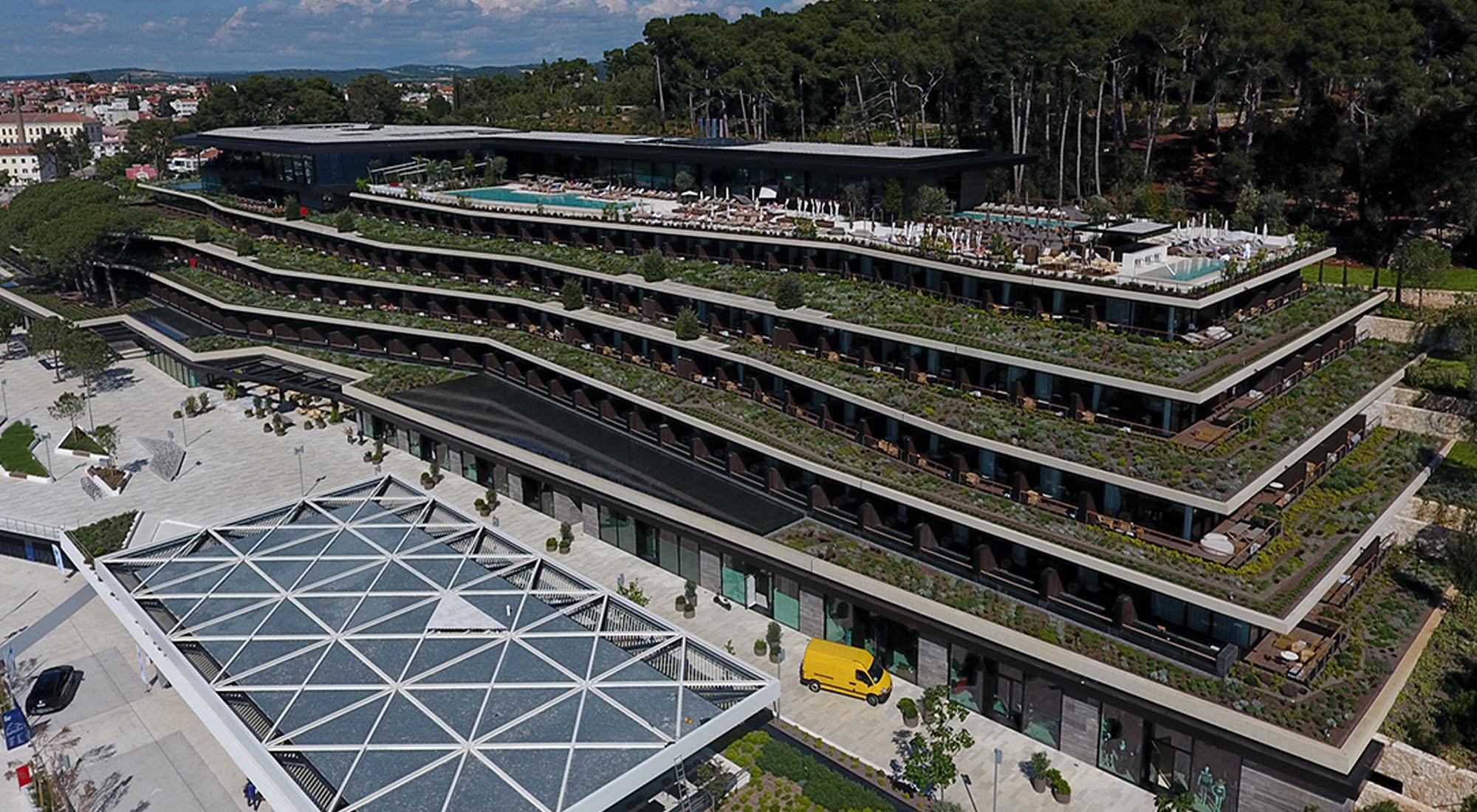 © Alukoenigstahl hr
© Alukoenigstahl hr
Ivanja Reka Elementary School, south Sesvete, east Zagreb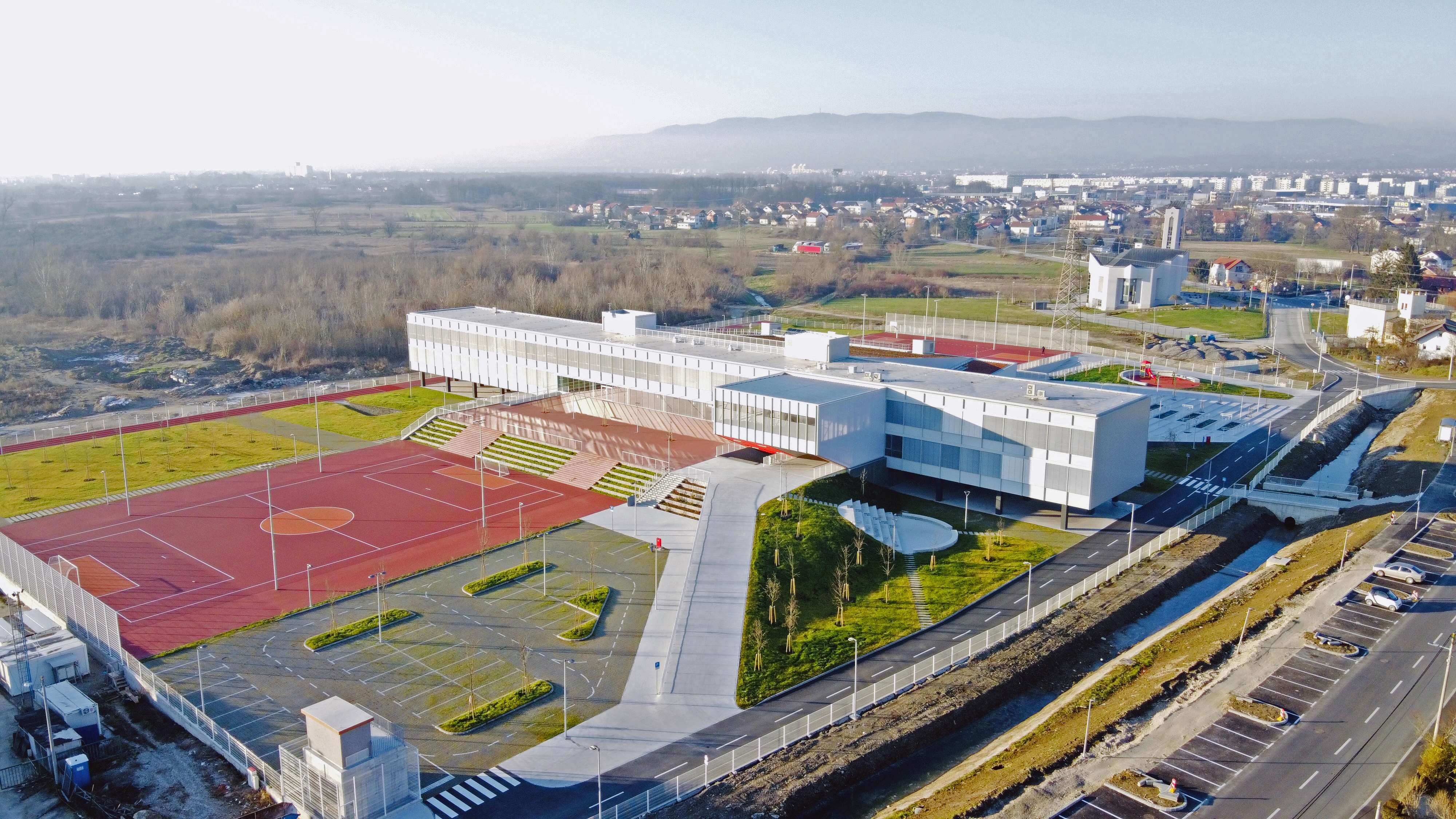
If every elementary school looked as pretty and was as well equipped as Ivanja Reka Elementary School in the south of Sesvete, eastern Zagreb, you could well believe daily attendance would never drop below 100%. Designed by a team of architectural authors (SUBMAP studios Marija Burmas and Ivo-Lola Petrić, and Jakša Kalajžić from JKA Arhitekti), the multi-level main building sits centrally, surrounded by sports, recreation and other facilities creating an impressive view for both those outside and within.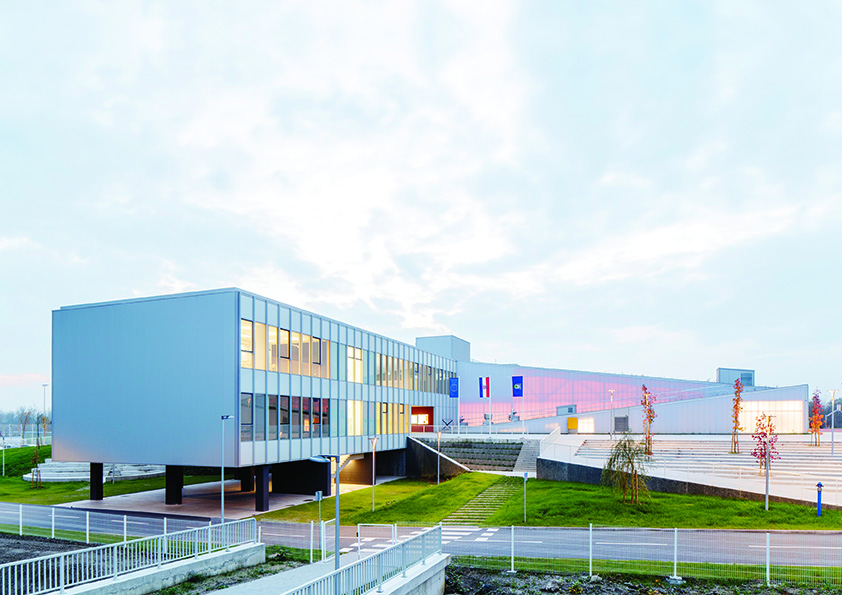 © Ivanja Reka Elementary School / Domagoj Blažević
© Ivanja Reka Elementary School / Domagoj Blažević
Roxanich Wine & Heritage Hotel, Motovun, Istria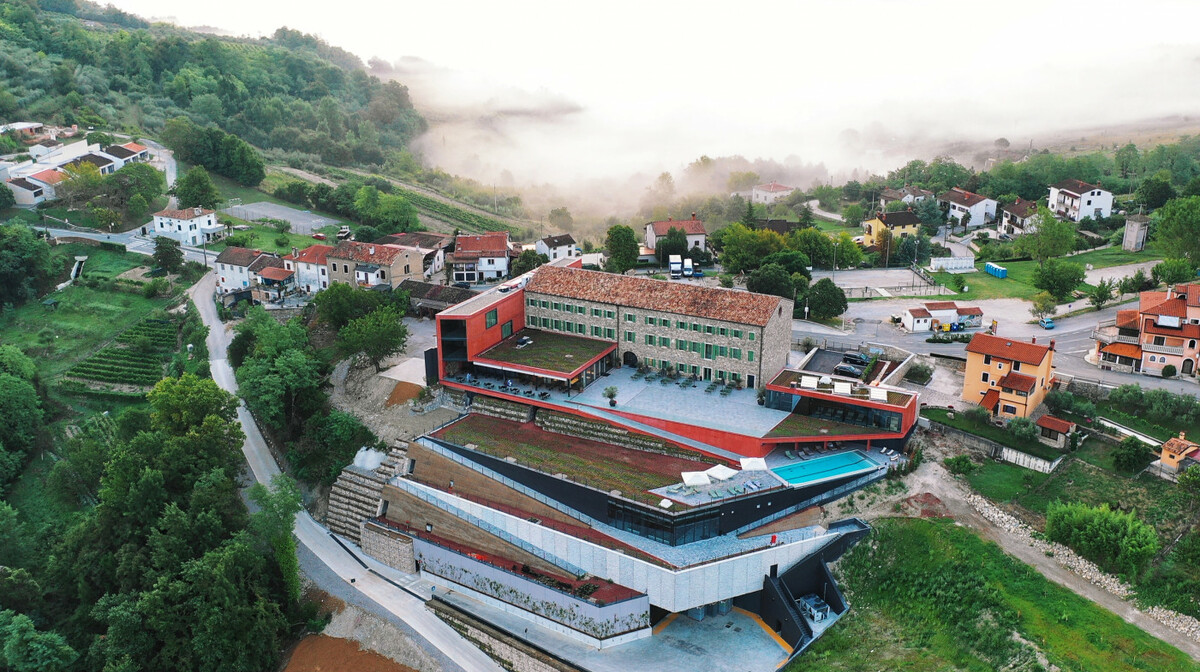
The view is unmistakably Istria. Vineyards carpet the land below and - rising above - the picturesque hilltop town of Motovun. Helmed architecturally by consistently bold Rijeka designer Idis Turato, this multi-level, multi-purpose redesign retains the traditional feel of its existing stone building and its purpose – there's a huge wine cellar beneath – but has opened up the space to give stunning views, not least over a sun deck that spectacularly reflects the sunrise and sunset. This is an active winery, with works and equipment all housed within its lower floors, not that you could tell from the 25 person capacity boutique hotel, restaurant and wine shop upstairs. © Roxanich.hr
© Roxanich.hr
Four Houses for Four Brothers, Diklo, Zadar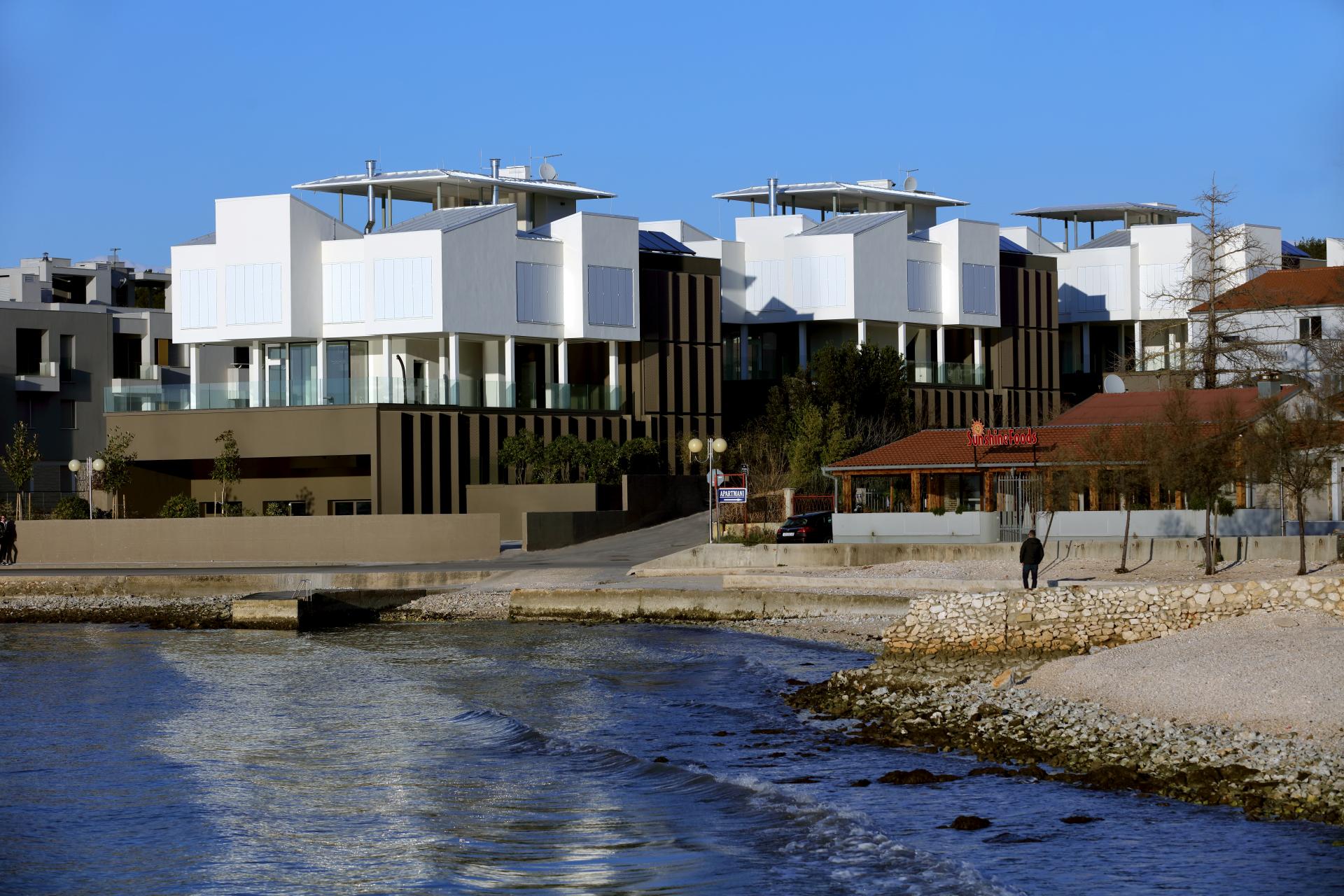
Judging from a theme of project titles used by architects Iva Letilović and Igor Pedišić, we're not sure that Four Houses for Four Brothers was actually commissioned by four brothers or that four live there. But, you could well believe they could. The ultra-modern set of independent houses, located next to a beautiful stretch of coast in a north Zadar neighbourhood, was specifically designed to address a distinctly Croatian reality – how to open up some of your dwelling to seasonal guests while you remain at home. The design separates the buildings clearly into separate quarters which allow privacy, comfort and minimal encroachment for both visitors and residents.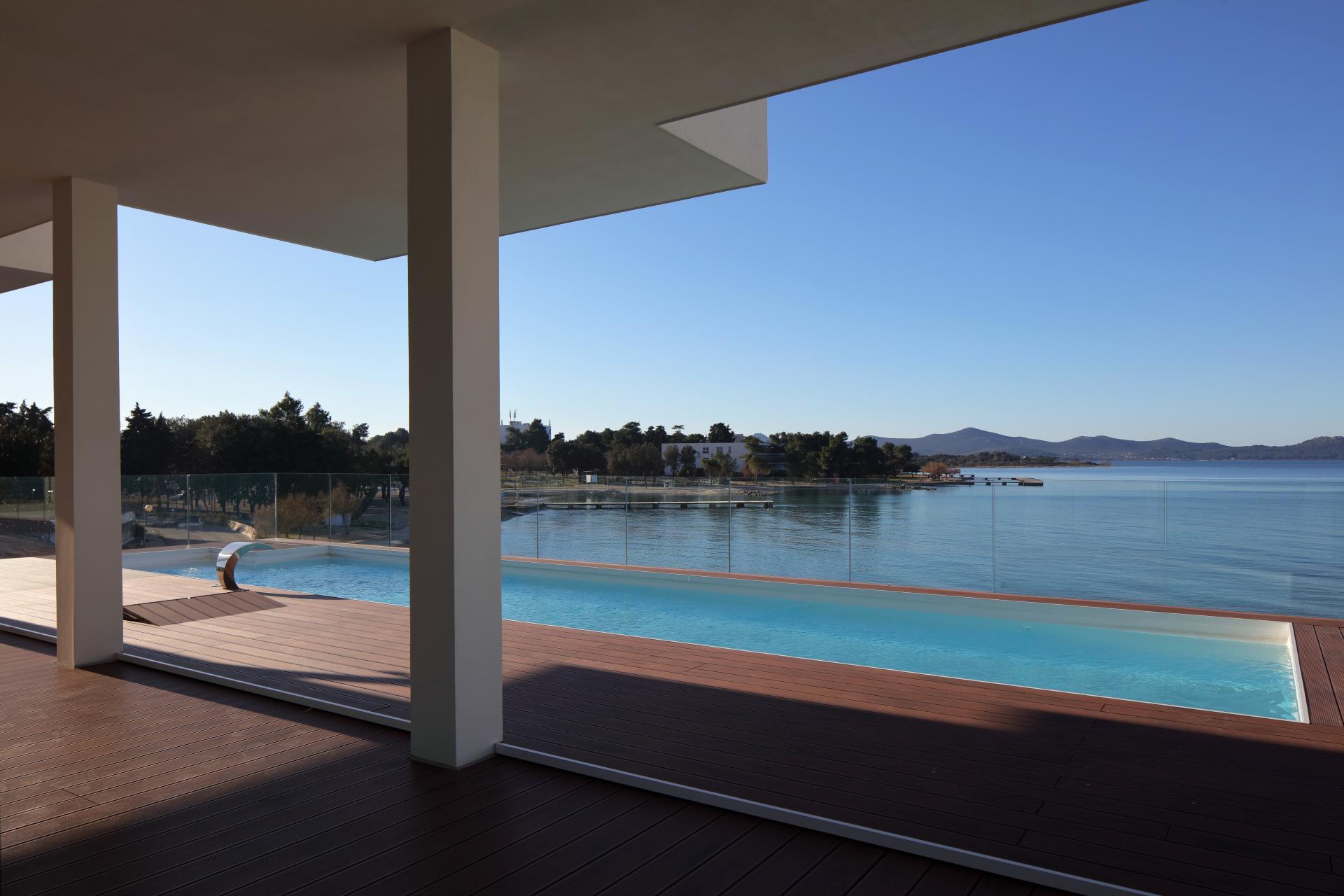 © Igor Pedišić
© Igor Pedišić
Galić Winery, Kutjevo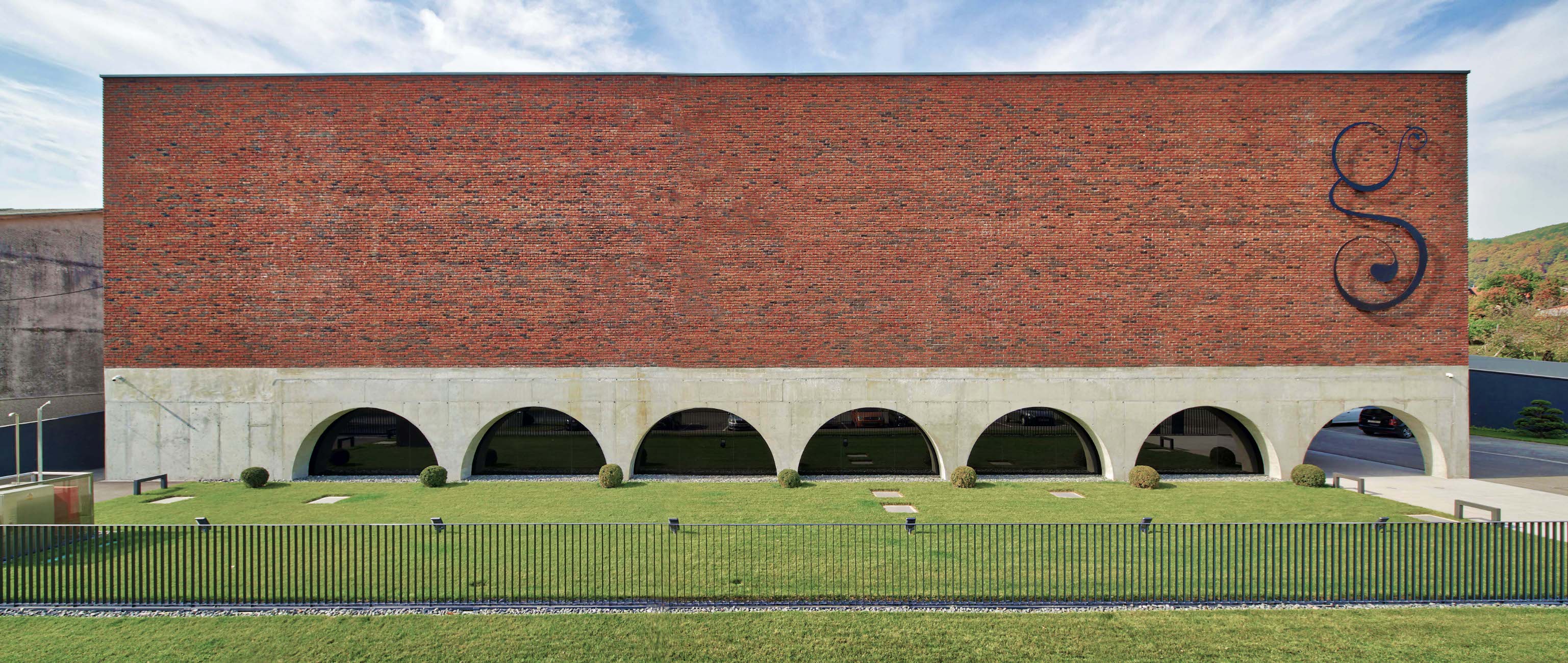
Award-winning outfit Zagreb-based studio Dva arhitekta have an existing, jaw-dropping design for a rural winery commissioned by famous makers Galic. However, that project, as yet, remains unrealised. But, their winery for Galic in the centre of Kutjevo town is complete. Melding the traditional and the contemporary, the upper section of the building is a bold and unblemished red brick, adorned with the winemaker's unmistakable logo. Beneath, concrete arches invite your eyes into the actual wine cellar – neat rows of barrels, protected behind glass walls that are set back from the facade. Brilliant!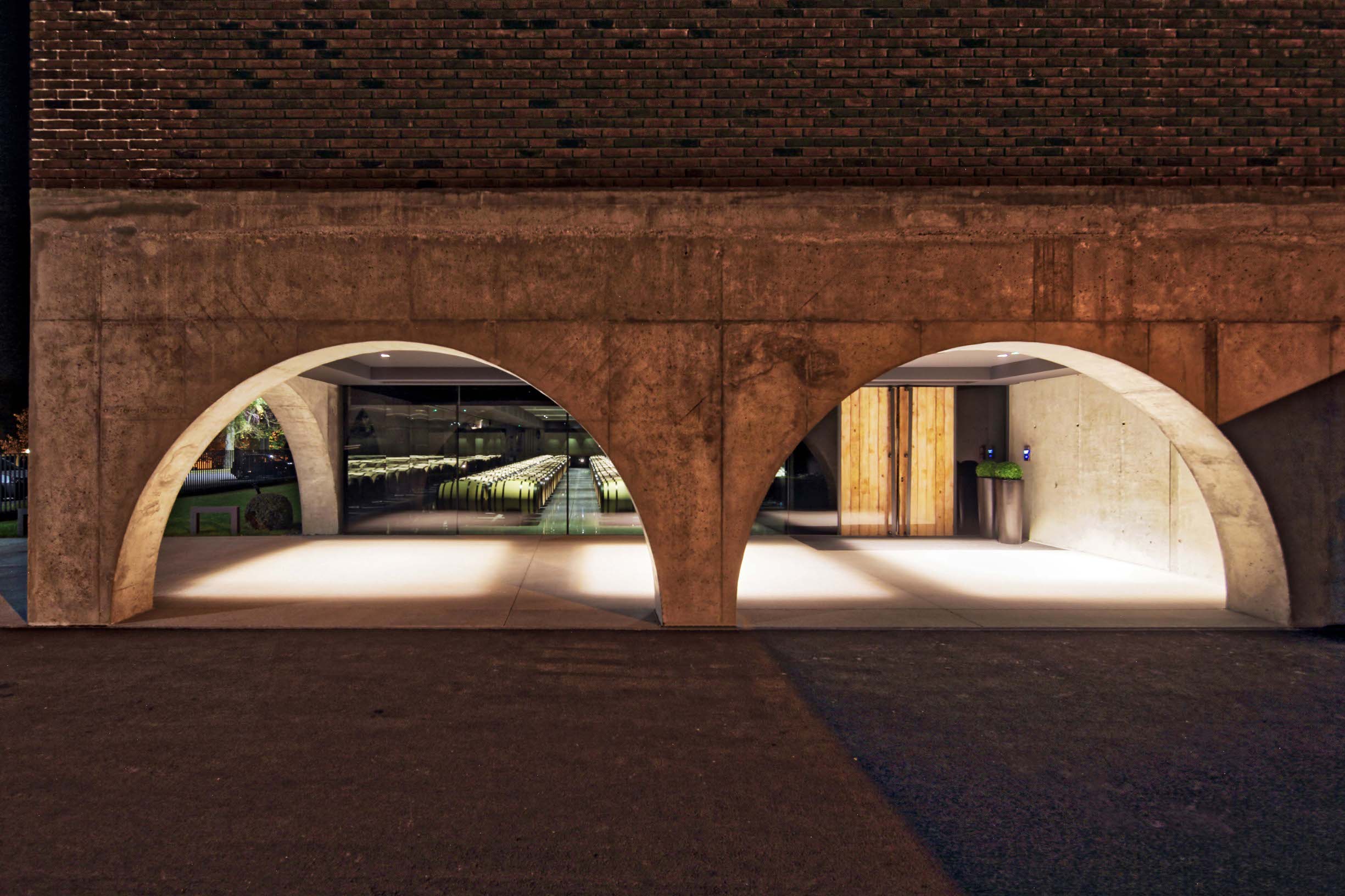 © Damir Fabijanić
© Damir Fabijanić
Seecel Centre, Zagreb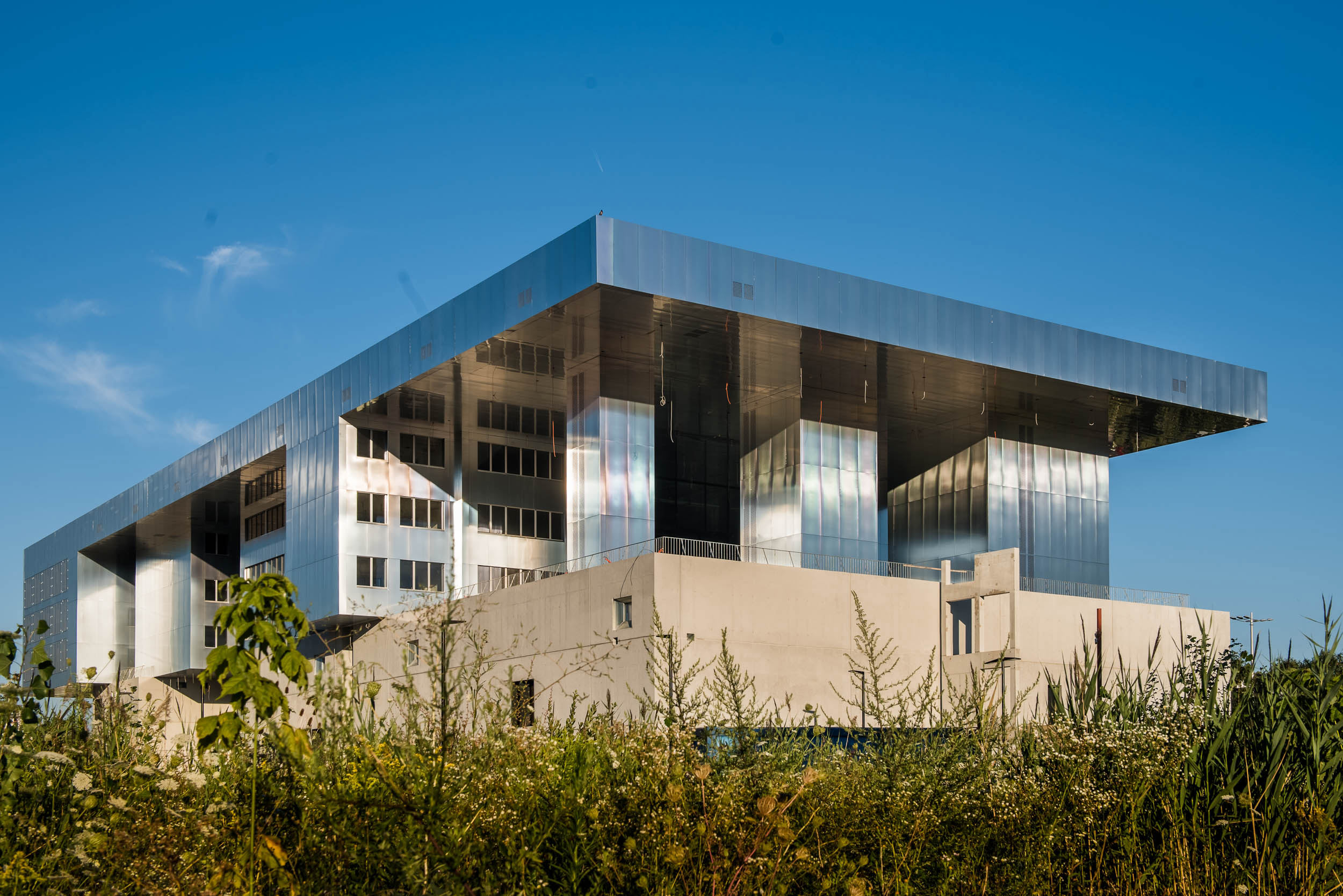
Designed as a regional centre for the development of entrepreneurs and its construction costs generously part-funded by European money, the Seecel Centre arrived long overdue and does not house its intended inhabitants. Such matters are best left for different articles as, here, we're concerned with the undeniable finery of this building's architecture and appearance. Holding space for accommodation, offices, communal collaboration, education and presentations, the five-floored building uses ultra-modern building materials and construction methods to make it low-energy, its great blocks of covered concrete, with glass windows set further back, echoing old fortifications. It was designed by Igor Franić who, in Croatia, is perhaps best known for the Museum of Contemporary Art in Zagreb and completed by him and his team at SZA / Studio za arhitekturu d.o.o.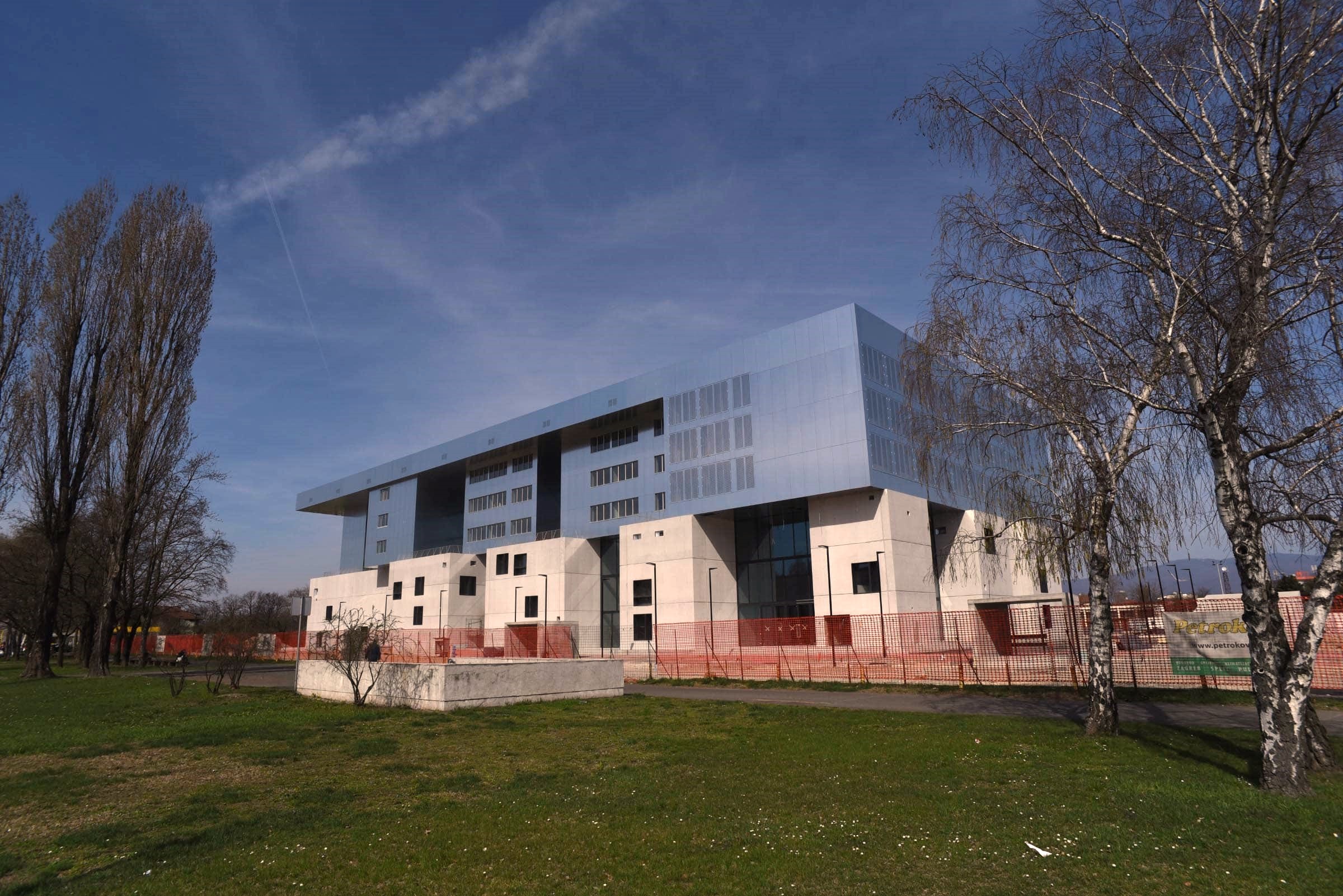 © Site Project d.o.o.
© Site Project d.o.o.
Trg Poljana, Šibenik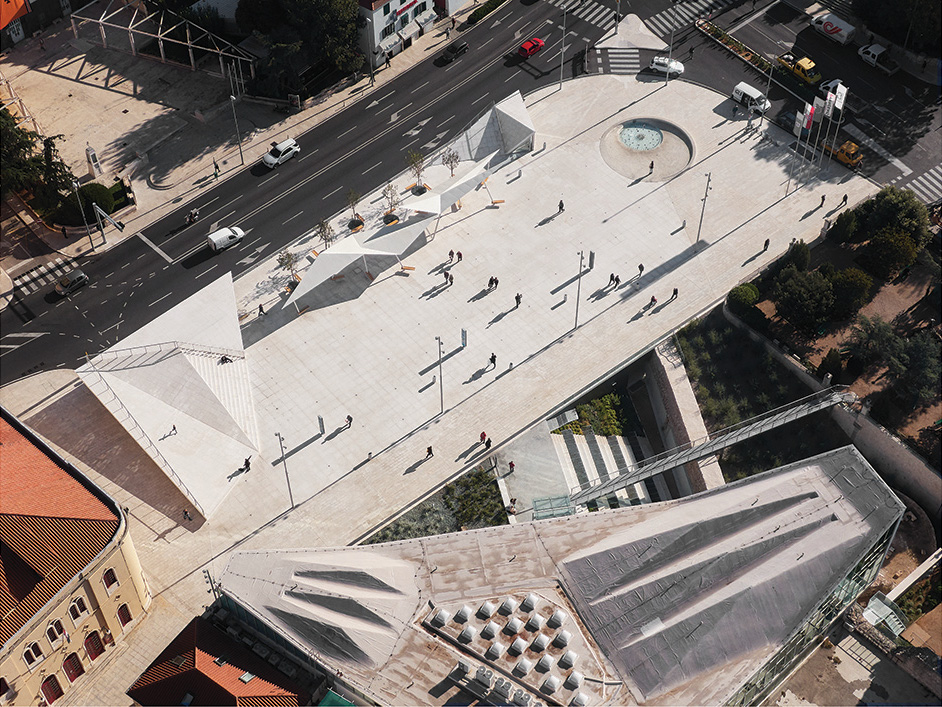
Not a small amount was asked of project architects Atelier Minerva from Dubrovnik in the task to create Trg Poljana in Šibenik. The site had long been earmarked for a much-needed, official town square – a place for events and public gatherings. But, the town was also woefully short on parking. By burying a multi-level car park beneath the open space, the architects successfully met both demands. Triangular shapes sit at an angle above shaded seating, echoing the inclines on the roof of the Juraj Šižgorić City Library opposite. Clever.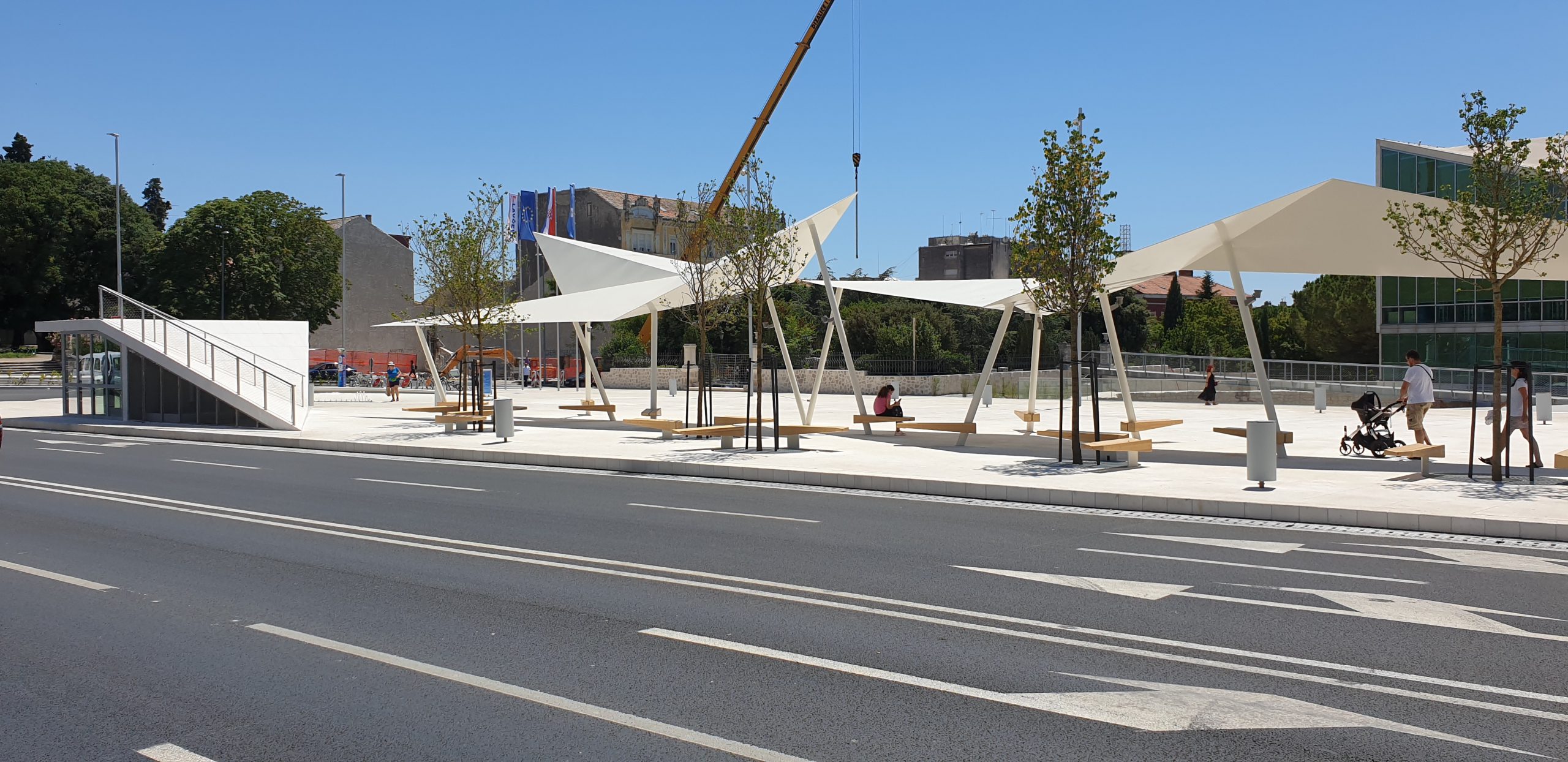 © Ervin Husedžinović / Eccos-inzenjering
© Ervin Husedžinović / Eccos-inzenjering
Homestead on Hartovski vrh, Žumberak, Zagreb County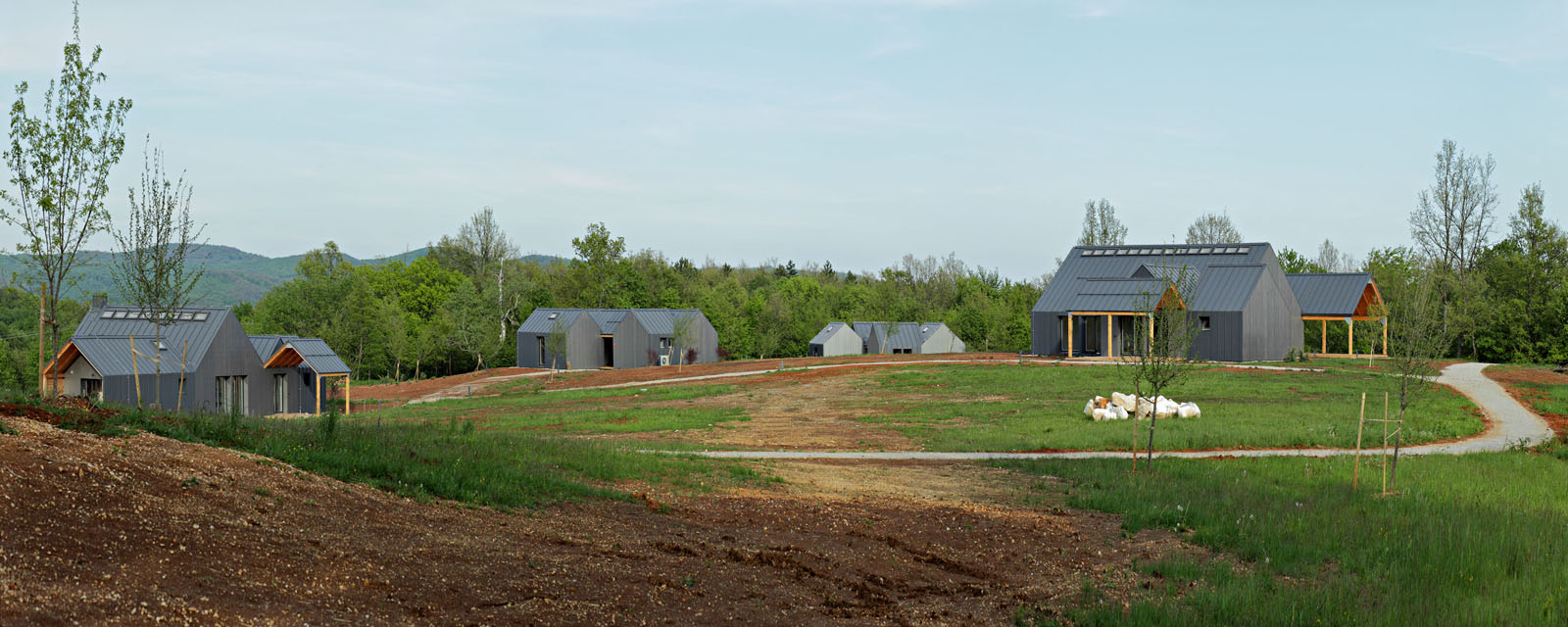
A collection of multi-purpose rural buildings, Homestead and Meditation Centre on Hartovski vrh was commissioned and designed for use by the Buddhist Center Zagreb. Their aim was to relocate activities such as chan, yoga, meditation, healthy living and teaching to a peaceful retreat outside of the city. Architects Branimir Rajčić and Mariela Žinić began the project in 2015, with the completed site arriving in 2019. Modern building materials are used, but not so the striking collection seems out of place within a partially agricultural setting. The set of buildings includes a residential dwelling and a larger hall for meetings and activities, both of which use large windows to allow the light and nature to flood in. © Robert Leš
© Robert Leš
Square of Traditional Crafts, Varaždin
A tricky task was given to architects Studio Konntra – how to enliven and modernise a traditional old square in the centre of one of Europe's best-preserved Baroque Old Towns. They did this by constructing transportable kiosks to house small outlets for local artists and craftsmen that cater to visiting tourists who come to the square. When occupied during the day, the plain wooden interiors allows the crafts to take centre stage. But, after closing time, the outsides of the wooden doors are brightly coloured and adorned with paintings, a welcoming environment for residents to use at night.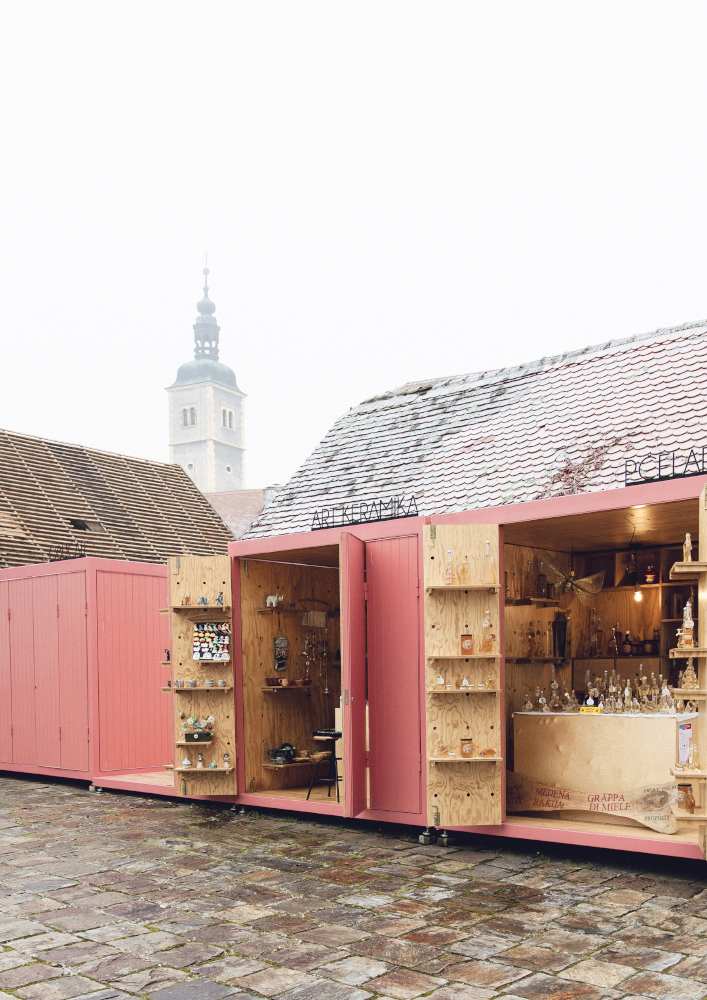 © Studio Konntra
© Studio Konntra
Six of the Best! Croatian Protected Produce On Sale in China
September 18, 2020 – Six items of Croatian protected produce are among the 100 European items to go on sale in China
Six items of Croatian protected produce are among the 100 European items to go on sale in China. In a reciprocal deal, 100 Chinese products will also be recognised and recommended on the European market.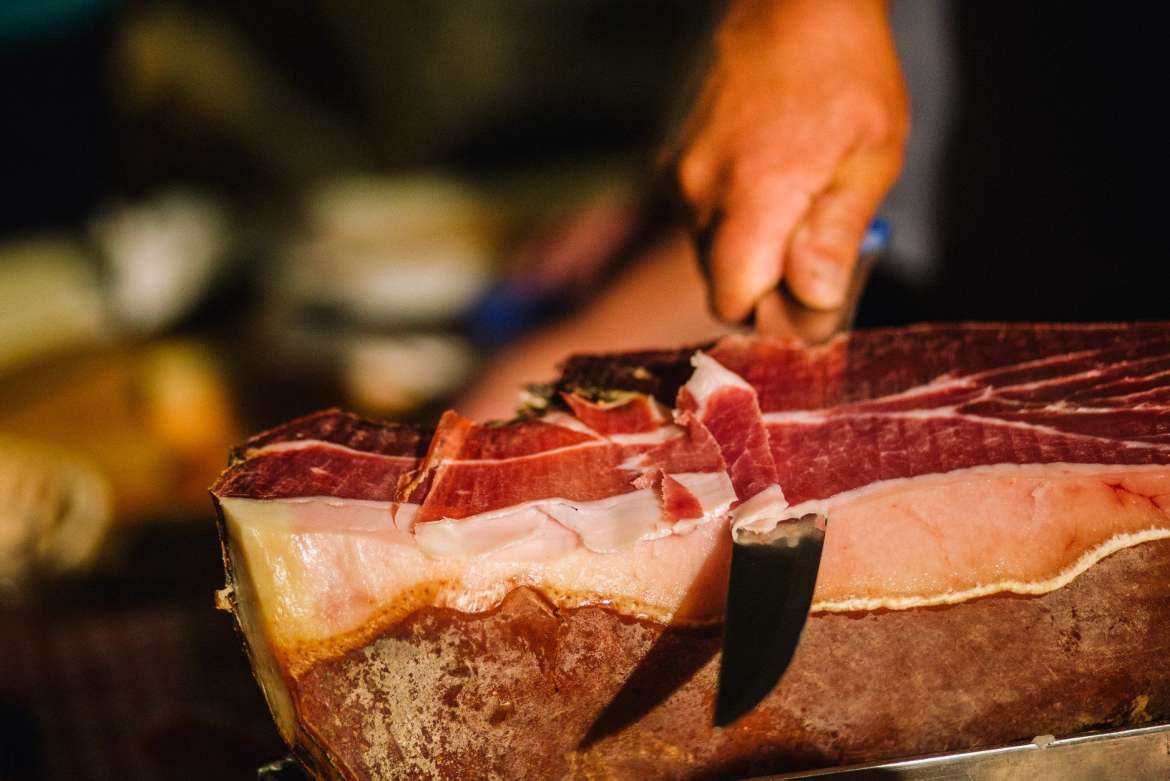 Dalmatian prosciutto © TZ Vrgorac
Dalmatian prosciutto © TZ Vrgorac
Baranja kulen, Dalmatian prosciutto, Drniš prosciutto, Lika potatoes, Dingač wine and Neretva mandarins are the premium six Croatian protected produce chosen to be among the European 100. All of the Croatian protected produce is already recognised at a national and at an EU-level and designated its status based on its unique place of origin.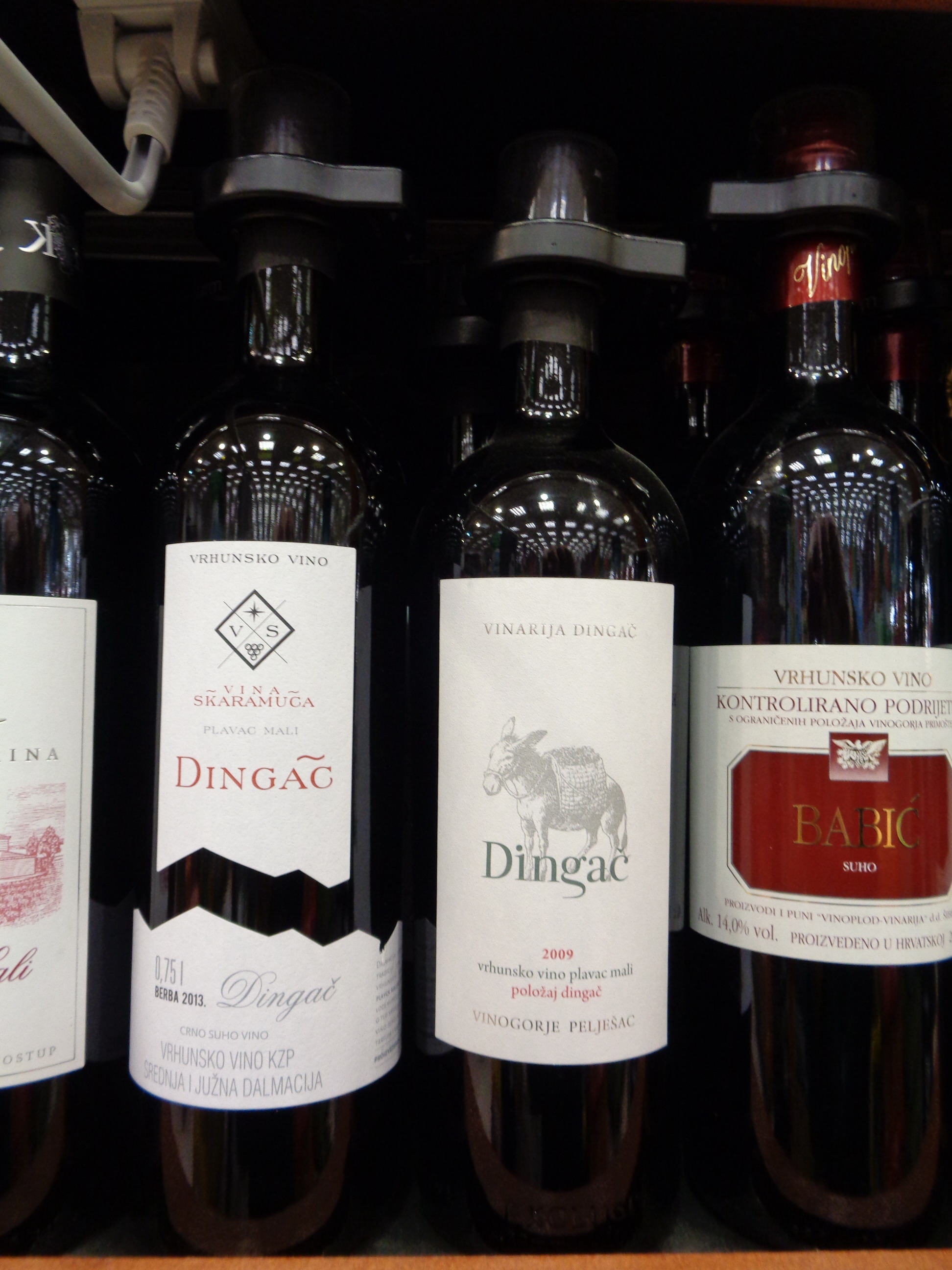 Dingač wine © Silverije
Dingač wine © Silverije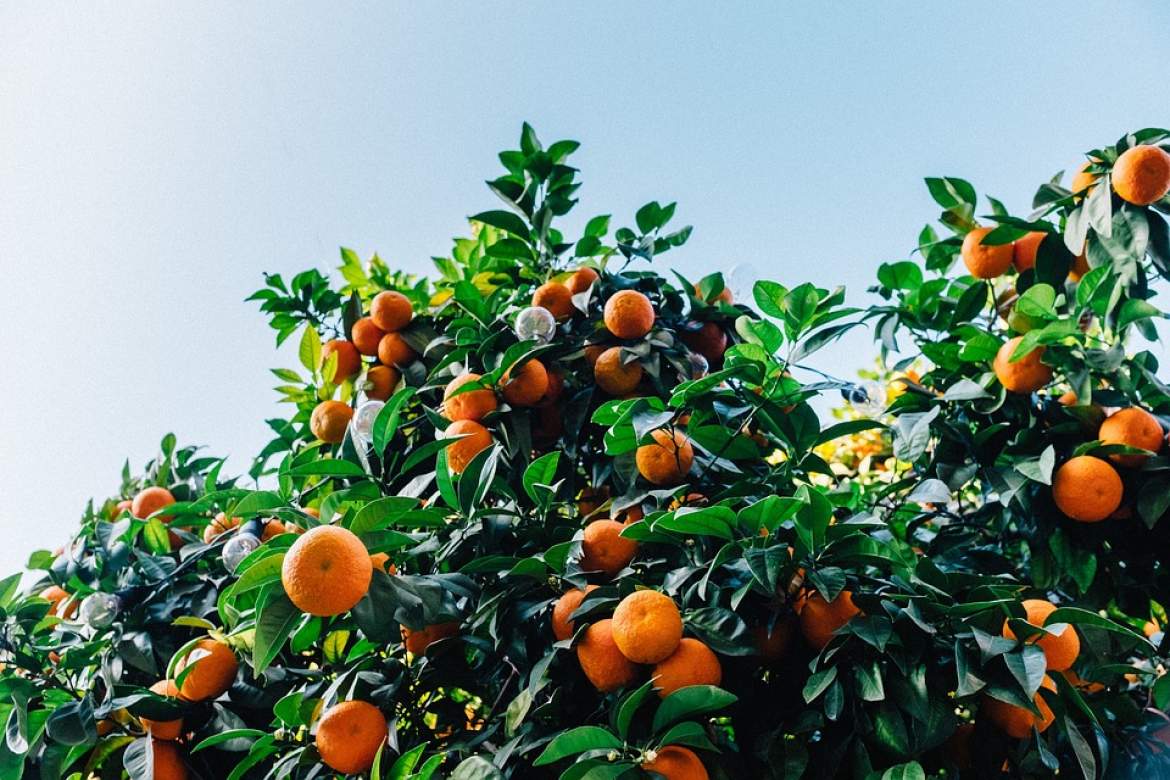 Neretva Mandarins
Neretva Mandarins
The European products will be specially marked and receive special privileges when they go on sale in China. Alongside the Croatian protected produce, other items on the European list are French champagne, Greek feta cheese, Italian Parma prosciutto, Italian mozzarella, Irish whiskey and Portuguese port. On the Chinese list of products are distinct varieties of rice, bean and vegetable products, some of which will already be popular with Europeans who eat or cook Chinese cuisine.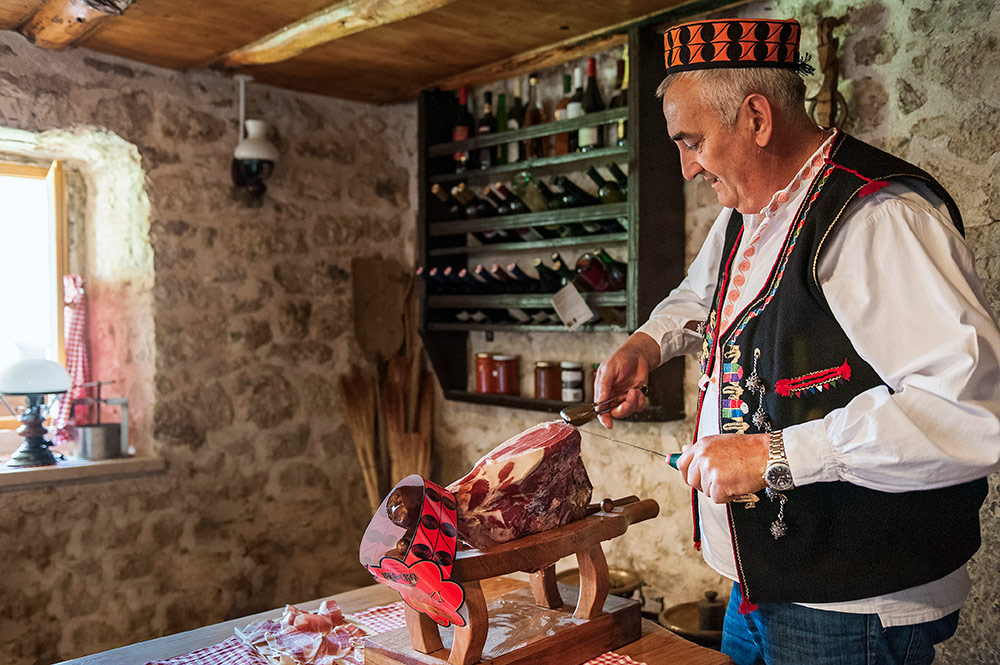 Drniš prosciutto © Tourist Board of Drniš
Drniš prosciutto © Tourist Board of Drniš
The full list of Croatian produce protected at an EU-level currently includes Istrian olive oil, Dalmatian prosciutto, Pag cheese, Lika lamb, Poljički Soparnik, Zagorje turkey, Korčula olive oil, Istrian prosciutto, Sour cabbage from Ogulin, Neretva mandarins, Slavonian honey, Drniš prosciutto, Cres olive oil, Pag salt, Baranja kulen, Bjelovarski kvargl, Varaždin cabbage, Pag lamb, Šolta olive oil, Meso 'z tiblice, Zagorje mlinci, Krk prosciutto, Lika potatoes, Slavonian kulen, Krk olive oil. Baranja kulen, featured within a traditional Slavonian platter © Romulić & Stojčić
Baranja kulen, featured within a traditional Slavonian platter © Romulić & Stojčić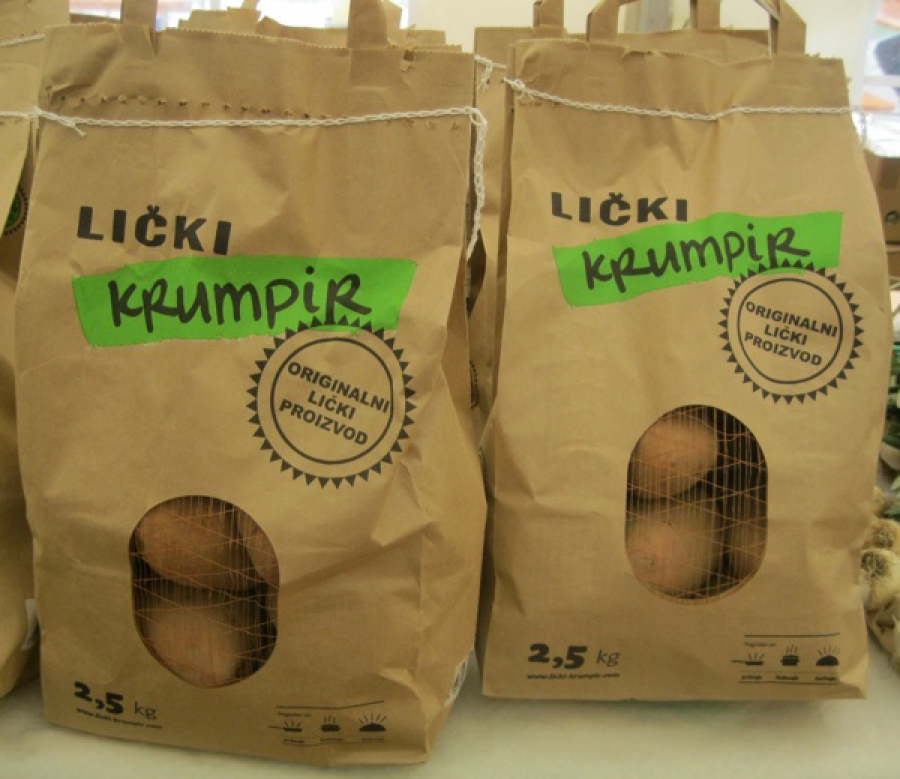 Lika Potatoes
Lika Potatoes
For the latest travel info, bookmark our main travel info article, which is updated daily.
Read the Croatian Travel Update in your language - now available in 24 languages
VIDEOS: Fire Near Šibenik Forces Motorway Closure, More than 120 Firefighters at Scene
Just after 1:30 pm on Saturday, a fire broke out in the Dubrava area near Šibenik which forced 38 firefighters to the ground assisted by the Air Force, said the Fire Department of the Šibenik-Knin County. Shortly after, a second fire broke out which spread to the motorway, reports Index.hr and T.portal.hr on July 27, 2019.
The fire brigade commanded Croatian Roads (HAC) close the motorway, which happened just after 4 pm. The highway was first closed in both directions between the junctions of Šibenik and Vrpolje, and around 5 pm, a larger part of the motorway was closed, from Skradin to Vrpolje.
According to the latest information from Šibenik, more than 120 firefighters, six Canadairs and three air tractors are at the scene. Around 6 pm, the fire reached the toll booths and approached homes. The strong southern wind (jugo) is giving firefighters difficulty containing the fire.
As you can imagine, there is plenty of traffic. Along the entire Adriatic highway in Šibenik area, a kilometer-long column of cars has formed thanks to the motorway closure.
Around 6:45 pm, the border forces of the Croatian Army arrived at the scene, and the entire Civil Protection System is on its feet.
According to Šibenski.portal, the fire reached Mihaljević and is over one hundred meters long, maybe a kilometer, and cannot be controlled at this time.
“The situation is such that we have 85 firefighters on the ground, 25 soldiers, we have raised the State Intervention Unit Split, and the police are very helpful in the traffic situation since the Šibenik-Drniš road is closed and since 6:27 pm the highway opened. The situation is such that the houses are not endangered, that is, at one point, some fifty houses were endangered north of the Garden Center in Dubrava. The fire is not under control, but the state of the houses is under control. Three Canadians, three air tractors, 35 vehicles. The firefighters are the alpha and omega of the fire, and we, from the Civil Protection Council, are involved as needed and in a situation where the fire would threaten the houses and when evacuation would be needed. Then we are legally responsible for logistics in terms of accommodation, transportation, and nutrition. All this is not necessary at present, but we are ready and the situation is changing rapidly,” says Danijel Mileta, the Deputy Mayor of Šibenik and the president of the Civil Protection Director.

DVD Brodarica-Krapanj Facebook
Šibenski.portal reported at 7:33 pm that the fire near the fast road Šibenik-Drniš broke out again. Namely, the fire brigade had been redirected to fighting the critical points near homes and after that part of the fire was partially under control, they returned to the location where the fire erupted again.
Šibenski.portal reported that the fire in southern Dubrava is the biggest fire this year, where seven firefighting planes from PP NOS OSRH and 26 members of Croatian army have been engaged, and in addition to strength in the air, the fire will also be fought by an unmanned Orbiter aircraft.
This is also the first time the Croatian Army's ground forces have been engaged in this year's firefighting season, according to the Ministry of Defense (MORH).
"We are giving it our all, but the fire on the front line is big. It is difficult to approach, and the wind makes its own challenges. There is a lot of smoke, and beside it is a pine forest that is quite dense. We will stay in the dark and hope to stop the fire,” said Colonel Vlahović.
For the latest updates on Croatia's roads, check the HAK website.
More soon…
To read more about news in Croatia, follow TCN’s news page.


